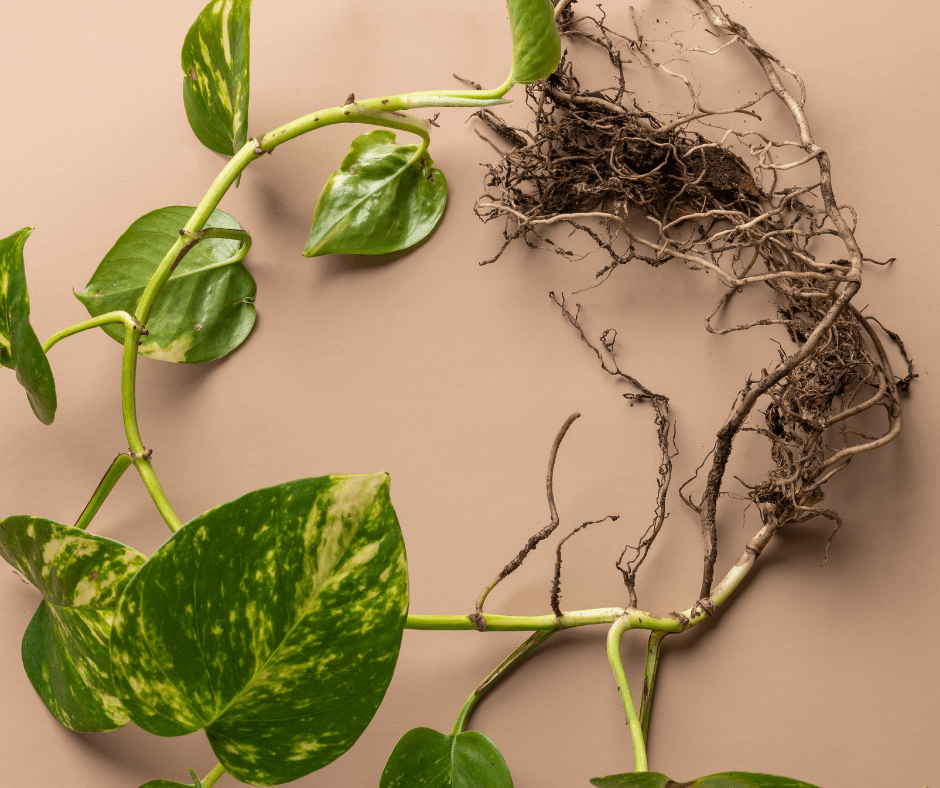The subterranean tentacles of your leafy friends are the key to it’s health, but how much do you know about how roots function? Scroll on to learn the essential points that every budding green thumb needs to know!
Why are roots important?
Strong roots equal a happy and healthy houseplant. Think of your leaves as the ‘skin’ and ‘mouth’ of your plant, and your roots as the stomach and heart. They can convert and store nutrients, search for and absorb water and keep your green babe standing tall. Without strong roots, your houseplants are weak and pest prone.
What causes root growth?
The key is soil that’s ‘alive’. A good soil mix is teaming with beneficial bacteria and mycorrhizal fungi (pronounced mike-o-rise-al). These little guys are like the UberEats of the plant world; the roots tell them what they need (whether it’s water, minerals or nutrients), and they bring it right to the cell-door. In turn, the roots bring the vital pockets of oxygen that bacteria need to survive. That’s why it’s so important to use bioactive plant food rather than chemical fertilisers.
What are the stages of root growth?
For trailing plants like the Devil’s Ivy, you’ll notice ‘nodes’ or growth points that are ready to shoot out roots! In the right conditions, these nodes will start with a single root. Overtime, it branches to build a tree-like system. The more established the root system, the stronger and more resilient the plant.

How do you know your roots are strong and healthy?
When we use our Support Pellets on houseplants, we usually notice thick, white and juicy looking roots. Lots of ‘branches’ are also a sign that your plant is well established and stable. When roots are thin, wispy and very fragile, it can be a sign that your plant needs bioactive soil.
What are aerial roots?
In the wild, aerial roots are grown to help climbing plants spread, often upwards. It helps the plant cling to the trunks of gigantic trees, growing towards the light filled rainforest canopy. At home, it’s beneficial to leave the aerial roots to grow naturally. If they’re really in the way, you can gently snip them off, or use them to propagate a new plant!
How do you know if your plant is root bound?
Ever wondered why a pot full of soil turns to a pot full of twisted roots? As they convert organic matter and grow in size, your roots can start to lose what they need to thrive. You might start to notice the growth of your plant slow, or the soil becomes tight, compact and light in colour. Generally, you should repot your plant every 1-2 years.


